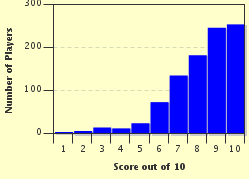Quiz Answer Key and Fun Facts
1. "I bought you violets for your furs". The furs might have been a shawl made of a member of the marten family whose name has been used in heraldry to mean black. Which of these dark-furred animals fits this description?
2. "You pinned my violets to your furs". The furs might have been a cape made from a crepuscular rodent native to the Andes Mountains in South America. Which animal, grey-furred in the wild, could this be?
3. "I bought you violets for your furs and there was April in that December". The furs might have been a jacket made from fur obtained from pinnipeds whose dense fur was frequently used for clothing. Which otariid is being described?
4. "You pinned my violets to your furs". The furs might have been a coat made from the fur of a semi-aquatic carnivorous member of the family Mustelidae, which also includes weasels and otters. What kind of fur would this be?
5. "I bought you violets for your furs and there was blue in the wintry sky". Against that wintry sky, the furs might have been a stole. Which animal's preserved body, head included, is often used to make stoles?
6. "You pinned my violets to your furs". These furs might be a muff made from the pelt of what dam-building rodent?
7. "I bought you violets for your furs and it was spring for a while". The furs might have come from which of these animals, one whose name refers to the scent glands located near its tail?
8. "You pinned my violets to your furs". The furs probably weren't the tall fur hats worn as part of a ceremonial military uniform such as might be associated with the guards at Buckingham Palace. What is the name for these hats, reflecting the material from which they were traditionally made?
9. "We fell in love completely, the day I bought you violets for your furs". These furs probably weren't the caps worn by thousands of children in the 1950s in imitation of their television favorite, Davey Crockett. What North American mammal, easily recognized by the mask it displays across its face, gave its name to this style of hat?
10. "You pinned my violets to your furs". A fur coat from this mammal reputed to love lettuce and carrots is the title of a 2006 album by Jenny Lewis. Which animal features in the album title?
Source: Author
looney_tunes
This quiz was reviewed by FunTrivia editor
crisw before going online.
Any errors found in FunTrivia content are routinely corrected through our feedback system.

